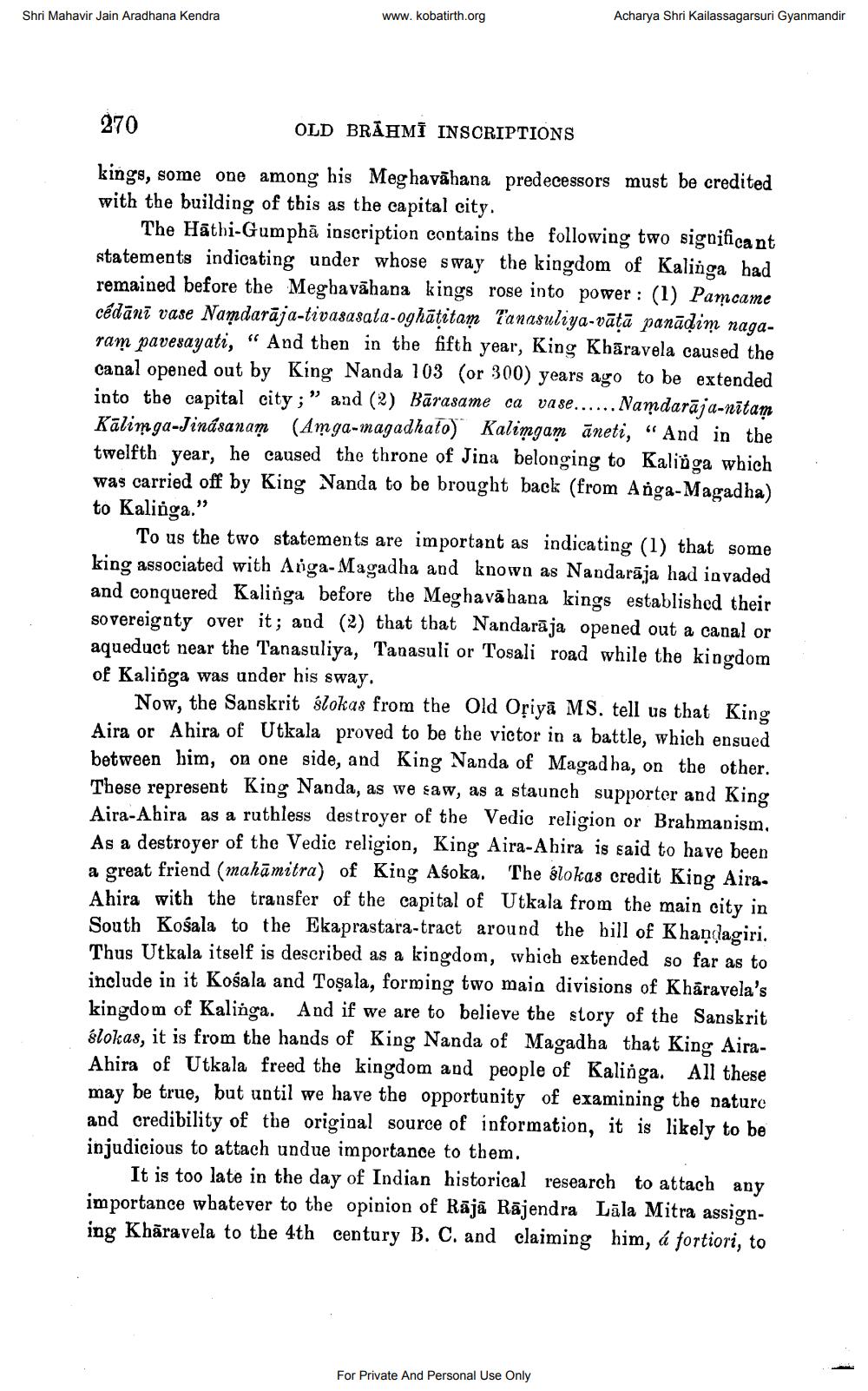________________
Shri Mahavir Jain Aradhana Kendra
www.kobatirth.org
Acharya Shri Kailassagarsuri Gyanmandir
270
OLD BRAHMI INSCRIPTIONS
kings, some one among his Meghavahana predecessors must be credited with the building of this as the capital city.
The Hathi-Gumpha inscription contains the following two significant statements indicating under whose sway the kingdom of Kalinga had remained before the Meghavahana kings rose into power: (1) Pamcame cédani vase Namdarāja-tivasasata-oghatitam Tanasuliya-vāṭā panāḍim nagaram pavesayati, "And then in the fifth year, King Kharavela caused the canal opened out by King Nanda 103 (or 300) years ago to be extended into the capital city;" and (2) Bārasame ca vase......Namdarāja-nītam Kalimga-Jinasanam (Amga-magadhato) Kalimgam aneti, "And in the twelfth year, he caused the throne of Jina belonging to Kalinga which was carried off by King Nanda to be brought back (from Anga-Magadha) to Kalinga."
To us the two statements are important as indicating (1) that some king associated with Anga-Magadha and known as Nandaraja had invaded and conquered Kalinga before the Meghavahana kings established their sovereignty over it; and (2) that that Nandaraja opened out a canal or aqueduct near the Tanasuliya, Tanasuli or Tosali road while the kingdom of Kalinga was under his sway.
Now, the Sanskrit slokas from the Old Oriya MS. tell us that King Aira or Ahira of Utkala proved to be the victor in a battle, which ensued between him, on one side, and King Nanda of Magadha, on the other. These represent King Nanda, as we saw, as a staunch supporter and King Aira-Ahira as a ruthless destroyer of the Vedic religion or Brahmanism. As a destroyer of the Vedic religion, King Aira-Ahira is said to have been a great friend (mahāmitra) of King Asoka. The slokas credit King AiraAhira with the transfer of the capital of Utkala from the main city in South Kosala to the Ekaprastara-tract around the hill of Khandagiri. Thus Utkala itself is described as a kingdom, which extended so far as to include in it Kosala and Toşala, forming two main divisions of Kharavela's kingdom of Kalinga. And if we are to believe the story of the Sanskrit slokas, it is from the hands of King Nanda of Magadha that King AiraAhira of Utkala freed the kingdom and people of Kalinga. All these may be true, but until we have the opportunity of examining the nature and credibility of the original source of information, it is likely to be injudicious to attach undue importance to them.
It is too late in the day of Indian historical research to attach any importance whatever to the opinion of Raja Rajendra Lala Mitra assigning Kharavela to the 4th century B. C. and claiming him, á fortiori, to
For Private And Personal Use Only




